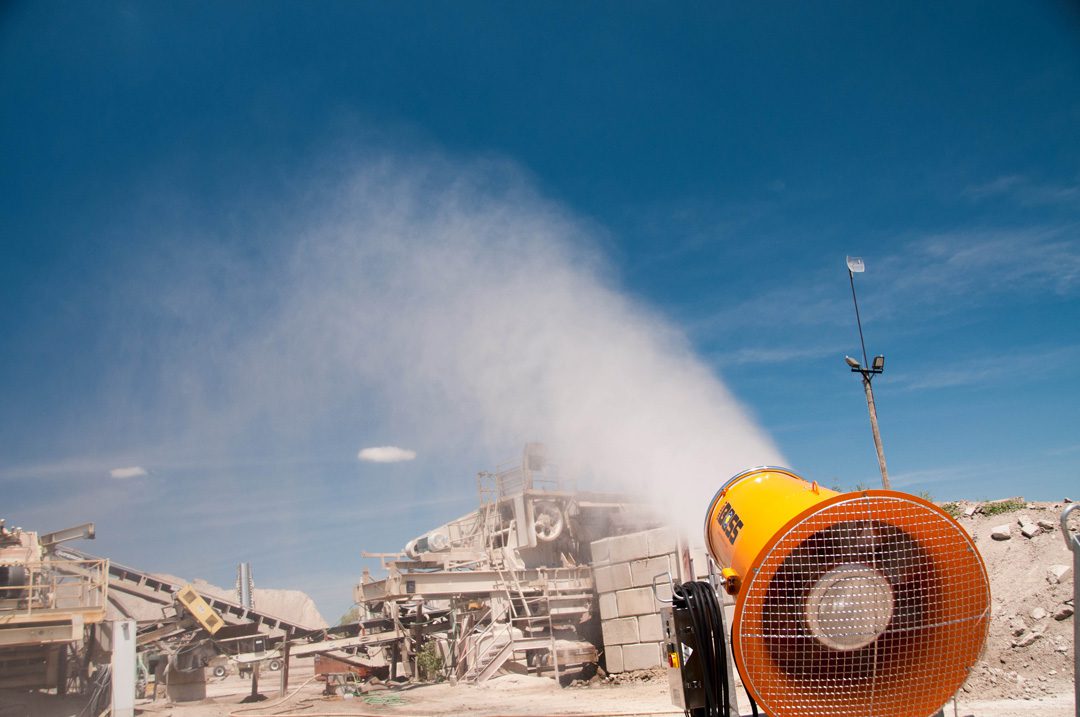Dust is a common issue in various industries, from construction and mining to manufacturing and agriculture. Managing dust effectively is crucial for ensuring worker safety, regulatory compliance, and operational efficiency. When it comes to managing dust in various environments, two common approaches are widely utilized: dust control and dust suppression. Each method has its benefits and considerations. While each approach has its merits, a comprehensive dust management strategy may involve a combination of both methods to achieve optimal results. Below is a quick look at the differences between these two approaches to help you determine which one is the right choice for your specific needs.
Understanding dust control
Dust control involves implementing measures to prevent or reduce the generation and spread of dust particles. This method focuses on source control, addressing the root causes of dust production. By employing dust control techniques, you can minimize the amount of dust generated and optimize working conditions. For example, implementing engineering controls like BossTek dust collection systems or using water-based lubricants to minimize friction can effectively control dust. This approach is ideal when the goal is to address the root cause of dust generation and minimize its environmental and health impacts. It often requires an initial investment in equipment and infrastructure but can lead to long-term cost savings and improved worker safety.
Exploring dust suppression
Dust suppression, on the other hand, is a reactive approach focused on reducing airborne dust particles already present in the environment. It involves applying substances like water, dust suppressants, or foam to bind with dust particles and weigh them down, preventing them from becoming airborne. Dust suppression methods seen on sites like bosstek.com are versatile and can be employed in situations where dust control is challenging or not feasible, such as in open-pit mining or during demolition activities. While dust suppression is effective in reducing immediate airborne dust hazards, it may require ongoing maintenance and the use of suppressant chemicals.
Choosing the right approach
When choosing between dust control and dust suppression, it’s essential to conduct a thorough evaluation tailored to your specific circumstances. Identify the primary source of dust emissions and assess its predictability. If dust generation is a continuous and manageable process, dust control measures like engineering controls may be the preferred choice, offering a proactive approach to minimize dust at its source. Equally, if dust is sporadic or challenging to control directly, dust suppression methods, such as water spraying or chemical agents, can effectively mitigate airborne dust particles after they are generated. Consider the environmental impact, cost-effectiveness, regulatory compliance, and overall effectiveness of each approach to ensure that your chosen strategy aligns with your industry’s unique needs and priorities.
Combining approaches for comprehensive dust management
In many cases, a combination of both dust control and dust suppression may be the most effective approach to comprehensive dust management. For example, a construction site may implement dust control measures during concrete cutting and grinding activities while using dust suppression techniques like water spraying for dust generated during excavation. This hybrid approach allows for proactive dust prevention and reactive dust containment, ensuring maximum dust management and efficiency.
Choosing between dust control and dust suppression should be a thoughtful decision based on the specific circumstances of your industry and operations. By implementing the most suitable strategy effectively, you can minimize dust-related risks and ensure regulatory compliance. Additionally, you’ll maintain a safe and productive work environment for your team.












